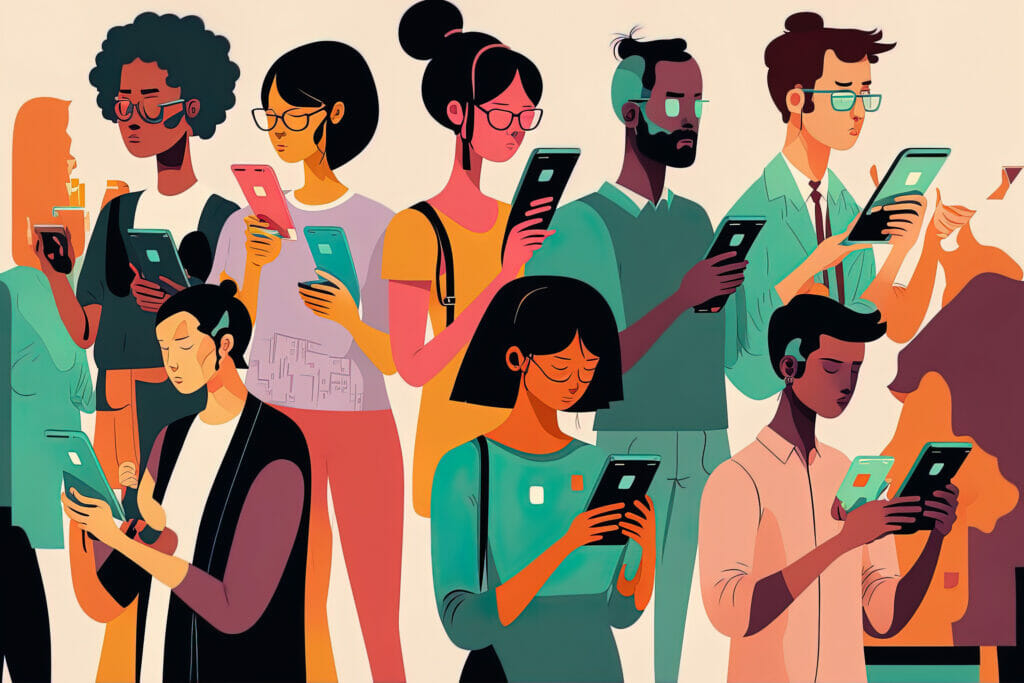the changing nature of social media

We conducted a recent study of social media use in Northeast Kansas, gathering data on platforms used by different demographics. We learned that while Kansans are still using “traditional” social media (Facebook in particular), younger demos are leaning more heavily into the newer platforms. This got our team really thinking about the evolution of social media and why we’ve seen certain changes across the past several years. Here we take a look at each social media platform, what it offers, and the way people engage.
first generation
Ten years ago social media was really just starting to take hold. It became the way people communicated what was going on in their lives with friends and family. Suddenly, we had the ability to communicate the daily details of our lives with people who otherwise wouldn’t be in the know due to physical distance or the passage of time. Did you have recent:
- relationship changes?
- great news/bad news?
- travel?
- new hair, don’t care?
All of those and more were the topics of posts shared to Facebook or Twitter with friends and family near and far. The nature of those networks was to share with people you knew and foster those relationships.
added noise
Over time the mundane posting and general overuse started to turn some users off. Irrelevant posts (“look what I just had for lunch!”) or Ashley’s 5th update of the day (by noon!) got under folks’ skin.
Add to that the appearance of business pages posing as people, too many ads, excessive negativity, politicization, and over-the-top, photoshopped humble bragging–it all started to push users away. The social media people had been seeking out as respite from real life stress just became one more stressor.
second wave
From this, new platforms evolved like Snapchat and TikTok. They moved away from the goal of keeping up with friends and family to instead focusing on general entertainment. While you can follow your friends and family, you’re also going to see content from creators that the algorithm thinks you’ll be interested in. Suddenly, you’re no longer focused on what Ashley (over)posted. Instead you’re watching bite-sized video after video packed into 10 minutes here or 15 minutes there.
People live increasingly busier and more stressful lives. These platforms offer funny/educational/cute videos as an escape curated to suit your taste while you’re waiting for your server to deliver dinner or as a way to spend an entire evening unplugging.
in summary
What was previously used for personal connection has shifted to be a source of entertainment or information gathering. While each social platform is unique, the story arc is similar. It arises to meet a collective need or interest, surges in popularity (particularly with early adopters or a younger audiences), business and advertisers inundate the platform, and something new enters the market to fill a newly created social need. Today newer platforms blur the lines between social media and traditional forms of entertainment, just as influencers make it hard to distinguish between honest content generation and alternative forms of advertising.
While we can’t predict the next emerging social media platform, we do believe a large driving factor in its origination will be seeking authenticity. It’s with this in mind that we encourage businesses to consider the changing nature of social media, and ensure their participation and advertising strategies align with it. The days of simply taking an image, dropping it into a brand-themed template, and writing ad copy to go with it are limited. Brands have to think about their approach, authenticity, and end goal for each social execution to ensure it will be effective on the current entertainment-based platforms and beyond.
Go Forth. Go Digital.
-cohort.crew



